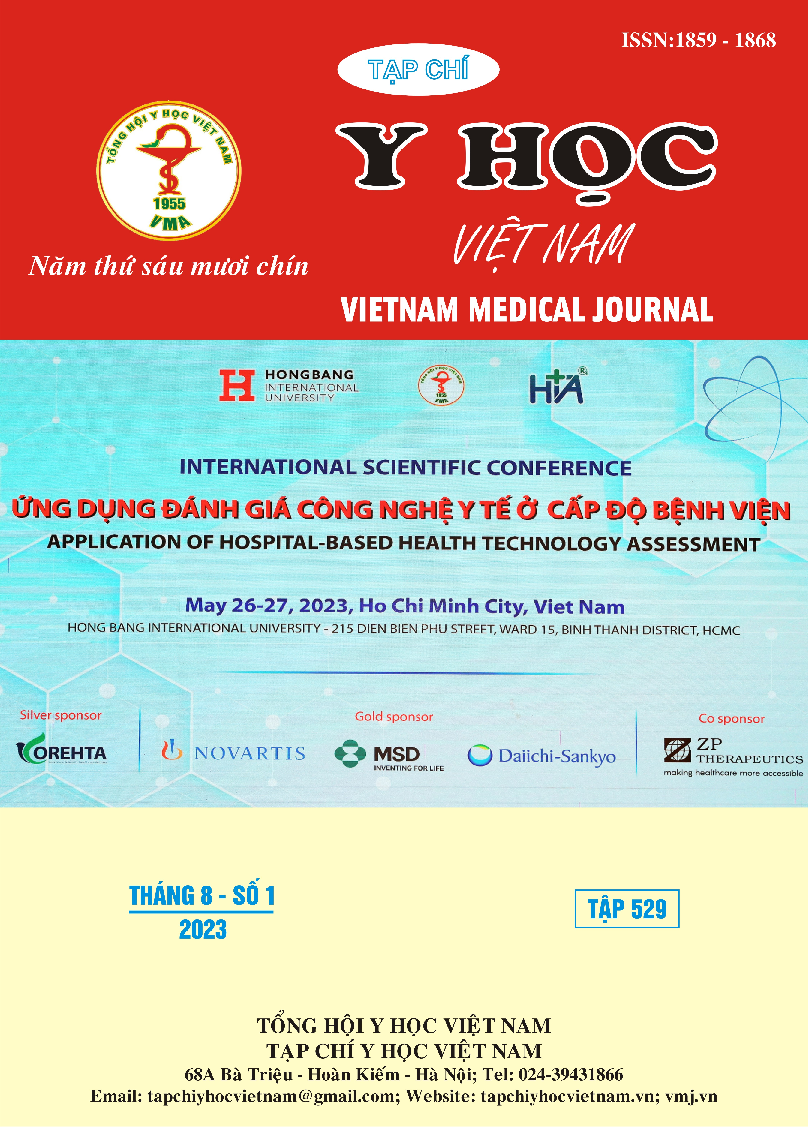ẢNH HƯỞNG CỦA THÔNG SỐ ĐỘNG HỌC PHÔI GIAI ĐOẠN PHÂN CHIA TỚI KHẢ NĂNG LÀM TỔ CỦA PHÔI NANG RÃ ĐÔNG
Nội dung chính của bài viết
Tóm tắt
Mục tiêu: Xác định mối liên quan giữa một số thông số động học hình thái giai đoạn phân chia tới khả năng làm tổ của phôi nang trong các chu kỳ chuyển phôi trữ. Đối tượng và phương pháp nghiên cứu: Nghiên cứu thuần tập hồi cứu trên 383 phôi nang tốt sau rã đông của các chu kỳ chuyển phôi từ tháng 3/2020 – tháng 12/2022 tại Bệnh viện đa khoa Tâm Anh. Nghiên cứu so sánh giữa nhóm phôi làm tổ và không làm tổ về các thông số động học tPNa, tPNf, t2 – t8, cc1, cc2, cc3, s2, s3, và các đặc điểm phân chia bất thường (phân chia trực tiếp, phân chia ngược). Mô hình tiên lượng khả năng làm tổ được xây dựng bằng thuật toán cây phân loại, giá trị tiên lượng của mô hình được xác định với đường cong ROC. Kết quả: Mô hình thứ bậc gồm các thông số phân chia trực tiếp, tPNa và cc1 cho thấy ảnh hưởng nhiều nhất đến tiềm năng làm tổ của phôi, với giá trị AUC = 0.641. Kết luận: Nghiên cứu cho thấy bên cạnh đánh giá hình thái, các thông số động học ở giai đoạn phân chia sớm có ý nghĩa tiên lượng khả năng làm tổ của phôi nang
Chi tiết bài viết
Từ khóa
động học hình thái, làm tổ, timelapse, chuyển phôi nang
Tài liệu tham khảo
2. Ngoc P, Thanh D, Quang LN, và c.s. A predictive model for the usable blastocyst based on the morphokinetic and morphologic parameters of day 3 embryos. 2022;9(4):4996–5006.
3. Nguyen DP, Pham QT, Tran TL, Vuong LN, Ho TM. Blastocyst Prediction of Day-3 Cleavage-Stage Embryos Using Machine Learning. Fertil Reprod. 2021;03(04):150–155.
4. Riley RD, Ensor J, Snell KIE, và c.s. Calculating the sample size required for developing a clinical prediction model. BMJ. 2020; 368.
5. Gardner DK, Surrey E, Minjarez D, Leitz A, Stevens J, Schoolcraft WB. Single blastocyst transfer: A prospective randomized trial. Fertil Steril. 2004;81(3):551–555.
6. Aguilar J, Motato Y, Escribá MJ, Ojeda M, Muñoz E, Meseguer M. The human first cell cycle: impact on implantation. Reprod Biomed Online. 2014;28(4):475–484.
7. Apter S, Ebner T, Freour T, và c.s. Good practice recommendations for the use of time-lapse technology†. Hum Reprod Open. 2020;2020(2):1–26.
8. Kirkegaard K, Kesmodel US, Hindkjær JJ, Ingerslev HJ. Time-lapse parameters as predictors of blastocyst development and pregnancy outcome in embryos from good prognosis patients: A prospective cohort study. Hum Reprod. 2013;28(10):2643–2651.
9. Zhan Q, Ye Z, Clarke R, Rosenwaks Z, Zaninovic N. Direct unequal cleavages: Embryo developmental competence, genetic constitution and clinical outcome. PLoS One. 2016;11(12):1–19.


